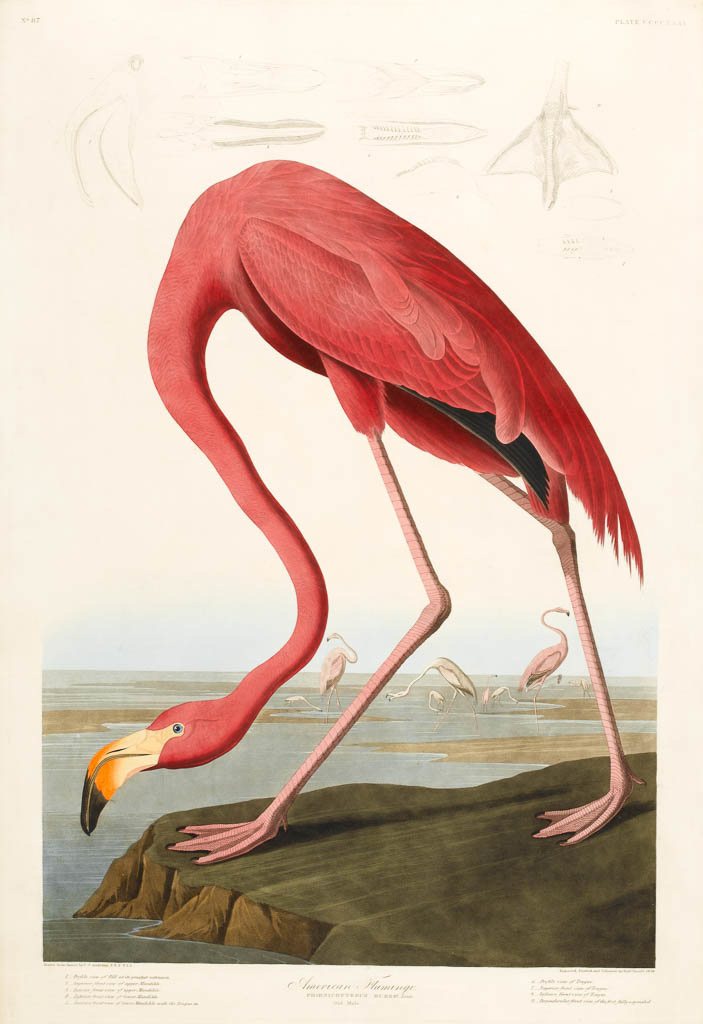Look, think, do: American flamingo from Birds of America
Description of this object or artwork
This print of an American Flamingo is by John James Audubon and is part of his work 'Birds of America' (1826-1838). ‘Birds of America’ is one of the greatest treasures of the Department of Manuscripts and Printed Books at The Fitzwilliam Museum, and was one of the first things bought for the Museum. The five volumes contain 435 engraved hand-coloured pictures and are so large that when they are opened they are approximately the size of a coffee table. The plates were printed on the largest possible size of paper, called double elephant folio, and the volumes are a whooping 1m x 75 cm when closed.
In 1820, Audubon declared he would paint every bird in North America, and devoted the next twenty years of his life to this obsession. At first Audubon was unable to find funding to have his enormous work printed, so he travelled to Britain to stir up interest with exhibitions of drawings , and to sell animal skins and feathers. Audubon’s influence was far reaching, and his field notes made when observing the birds have made a significant contribution to the understanding of bird anatomy and behaviour. Charles Darwin even quoted him three times in 'On the Origin of Species' and in later works.
American Flamingo (Plate 431) from 'Birds of America'
John James Audubon (1785-1851)
Produced between 1827- 1830
Engraved and hand-coloured printed plate
1m x 75cm closed
Look
In 1820, Audubon set off across America to paint every bird he found. In 20 years, he had painted 495 species and discovered 25 new ones.
Look at his picture of a flamingo. Imagine you are the first person ever to see one and describe it to someone.
Think
How do you think Audubon was able to draw the birds in such detail?
Are there any clues in the picture about what habitat flamingos live in?
Think about the different places plants and animals live. How many different animal habitats can you think of where you live?
Do
Audubon’s sketches and field notes helped him to understand how birds live and act.
How many different birds can you spot from your window? These RSPB Bird Watching tips might be useful.
Pick your favourite bird and draw and write about it. Perhaps you could pretend you are the first person ever to spot it!
Sign up to our emails
Be the first to hear about our news, exhibitions, events and more…

